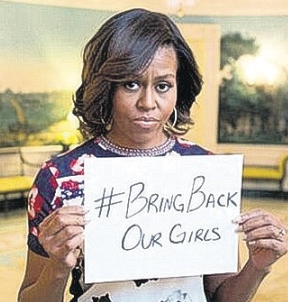Virtue signalling
Virtue-signalling is making a statement that looks controversial but is made predominantly to garner approval. The only way of ensuring approval for controversial statements is to make them to an audience most of whom you believe will already hold the view. It’s a form of preaching to the choir.
Social media is intrinsically excellent medium for virtue signaling, because you choose and filter your audience (or it chooses and filters you) based on pre-determined sympathies.
The cause célèbre of virtue signaling followed Boko Haram’s kidnapping of 276 female students from a Secondary School in Borno State, Nigeria, a categorically horrific act, to which the networked world responded, on twitter, with the hashtag #BringBackOurGirls, often accompanied by a photo of said individual, moon faced, holding up the hashtag on a piece of paper.
The point isn’t to criticize the sentiment — what kind of monster[1] could do that? — but to ask what practical good it does? Would even a worldwide crush of hashtags lead a religious fundamentalist to the error of his ways? Or was that not really the point, but to visibly, righteously, show concern in a costless but bragadocious way?
Sayeth Wikipedia:
- However, with limited action and success after initial protests in 2014, little has been accomplished through social media regarding results. As of January 13, 2017, 195 of the 276 girls are still in captivity, close to three years after the kidnappings.
- ↑ Well, obviously a member of Boko Haram, of course. but you get the point.
